Flying without Bernoulli
2012/10/01 Roa Zubia, Guillermo - Elhuyar Zientzia Iturria: Elhuyar aldizkaria
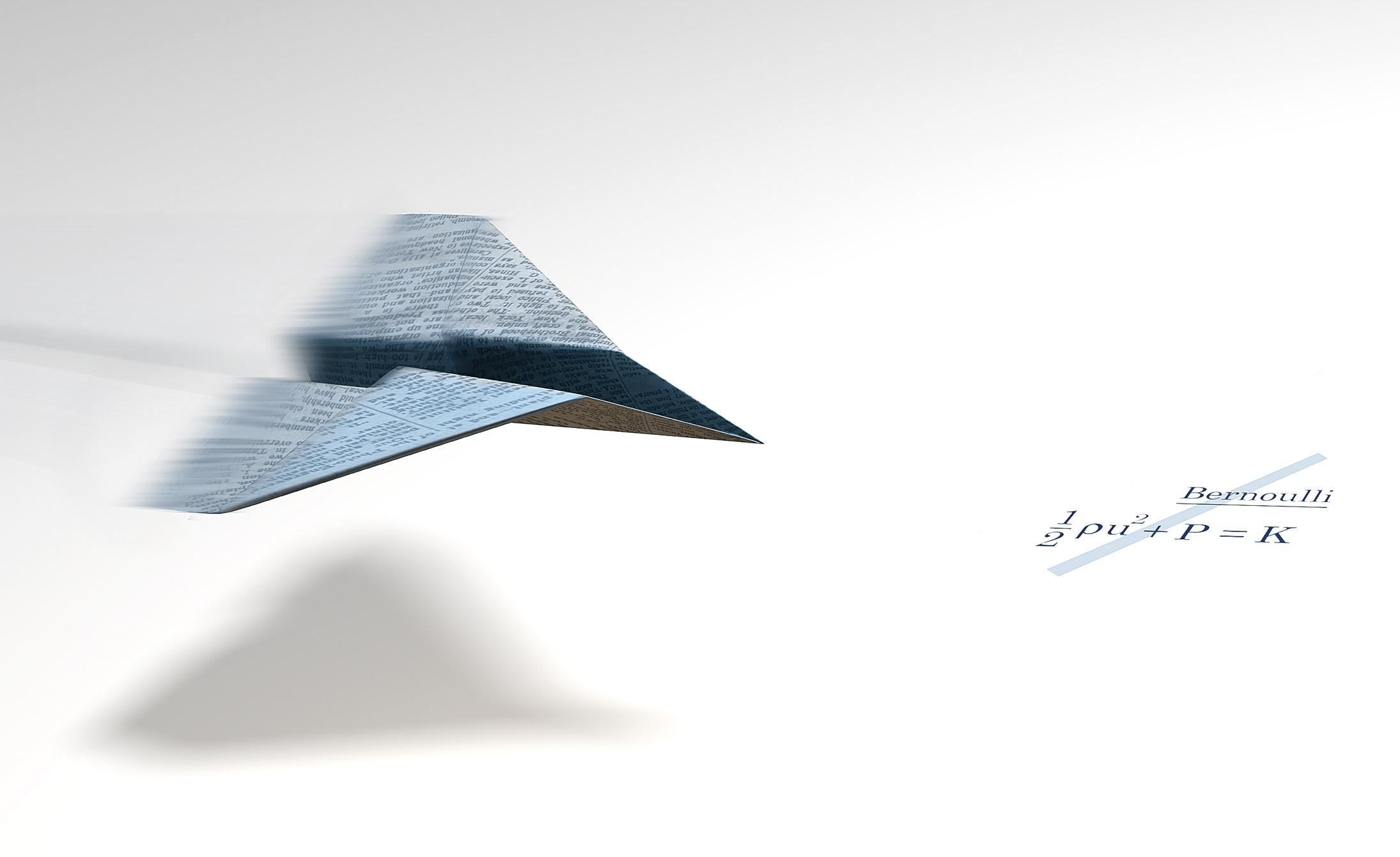
A boeing 747, the usual transatlantic aircraft, weighs approximately 180 tons when it is empty. The load on commercial flights can double the weight. The airbus 380 is even greater. With all the cargo can reach 573 tons. To fly you need a force that compensates all this weight. However, for aeronautical engineers, finding this force is not a challenge because the physical principle that sustains these planes in the air is the same as that which holds a paper aircraft.
This is what Antonio Cantó, divulgador and expert in airplanes of the blog La Pizarra de Yuri says: "Any aerodynamic restraint hypothesis that does not explain the flight of the plane on paper is probably incorrect and -- this surely - incomplete". The paper plane, the Boeing 747, a helicopter, a bird and a bee, each with a very different design, and each with its conditions, flies pushing the air down. This is the basic principle. The explanation from there is complex and varies a lot from one cantilever to another.
In the case of planes, however, this basic explanation has been replaced by another one that keeps in the air the principle of Bernoulli. This explanation does not explain the flight itself, but it is a special case because it is based on a real phenomenon and has been used a lot in dissemination. In the words of the publisher Cecil Adams, author of the column Straigh Dope in the Chicago Reader, this idea "has also been published in respectable scientific textbooks." However, this figure does not appear in the technical texts.
Success of Bernoulli
In dissemination it is customary to simplify ideas, and an example of this is the explanation of the principle of Bernoulli. The principle is part of the flight, but it is not the key to the flight.
Daniel Bernoulli XVIII. He was a Dutch mathematician and engineer of the nineteenth century, famous in the history of science for his research in fluid dynamics. Its most well-known principle is that the faster a fluid moves, the less pressure exerts on a solid surface.
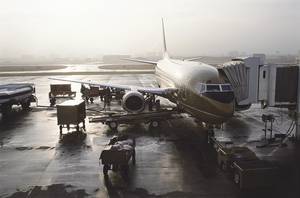
In fact, there is no relationship between the flight and the life of Bernoulli. In that century, the only way to fly was the balloon, in which the Montgolfier brothers flew five months after Bernoulli's death. And the concept of plane did not exist either. But the air is a fluid and the wings of the plane are two large solid surfaces.
It is a particular form of wings. In most aircraft, the wings are curved at the top and are flat at the bottom, and the air circulating at the top of the south is longer, and moves faster than the one running at the bottom. In addition, the upper air arrives before the end of the wing than the lower air. There is Bernoulli, whose principle explains that this flow exerts greater pressure on the south than on the superior. And as a result, the plane rises in the air.
In general the flight is like this. The argument is correct; in this typical wing design, by the beginning of Bernoulli, the plane receives an ascending force. But this argument is not enough to reach the final conclusion, so the conclusion is wrong: that force is not as big as to keep the plane in the air.
Missing something
The calculations are clear. The effect of Bernoulli increases with the speed of the plane, but to keep in the air the weight of a small standard plane, as is the case of Cessna 152, the speed should be higher than 480 km/h and these small planes hardly reach 100 km/h. And the same happens with any other plane; the upward force caused by the principle of Bernoulli does not reach 1% of what the plane needs.
Even apart from the numbers it is seen that the effect of Bernoulli is not the cause of the flight. On the one hand, highlights the case of the planes that perform acrobatics. These planes fly up and at that time, in addition to the plane, the effect of Bernoulli is directed towards the opposite side. In the case of the wings presented above, the effect pushes the plane to the ground.
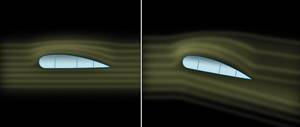
On the other hand, not all wings possess the aforementioned design. An example is the wings of current commercial aircraft. Its design is based on a supercritical aerodynamic plane. Designed by NASA engineer Richard Whitcomb in the 1960s, it is almost flat from above, with a very low curvature and a very low effect of Bernoulli's principle.
Another illustrative example is the first aircraft in history: Samuel Langley's 1896 unmanned machine, the famous Flyer of the Wright brothers, and the aircraft that were made in the following years, had wings on both sides, up and down. In them, the air follows the same path on both sides and the effect of Bernoulli does not influence. The same for paper aircraft and delta wing. The force that supports in the air generates another thing.
How to attack the air
The key is in Newton's third law, at the beginning of action and reaction: pushing the air down, the air pushes the plane upwards. But how does that happen? The answer is in another factor: the angle of incidence. When flying, the wing section is not horizontal, it has an attack angle by which the air coming out from behind the wing goes down.
It is a force that can be easily felt. Produced by Discovery Channel in the documentary Understanding Flight, actor John Travolta himself, who is a pilot, explained how: "If you drive the car at a minimum distance of 50 km/h is safe, open the window and stretch the arm outside." If we turn the arm and place the hand at an ascending angle, the hand will notice the force upwards. "If you round your hand with your fingers, the effect increases," explains aircraft designer Burt Rutan in the same documentary. The bird feathers also present this curved design.
The more air is pushed down, the stronger the plane gets. And the faster it goes, the more air the plane pushes down. If the plane moves slowly, to maintain the same restraint force, the angle of attack must be greater, but up to a limit. When the angle is 18-20 degrees, the air surrounding the wing stops moving through the layers and begins to create turbulence. The restraint force disappears and the plane falls. Therefore, the flight is based on small attack angles, usually up to 10 degrees. This angle also explains the flight of the paper plane, which plans the plane while it lasts around that angle.
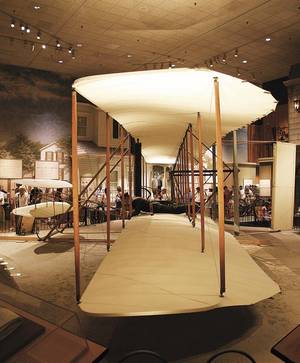
Along with the angle of attack, many other factors intervene in the ability to push the air from the plane down: length and surface of the wings, air density depending on the height of the plane, wind, etc. But the angle of attack is key, and this is of paramount importance to the pilots, to a large extent piloting a plane is the art of adjusting the angle of attack.
The principle of Bernoulli reappears in the angle game. The changes in the angle accelerate and slow the two air flows, that is, above and below the south. The pressure of both flows is different, so the push up that is generated also helps. Bernoulli is not completely discarded from the explanation of the flight.
It is not totally ruled out, but it is not the main cause of flying. The shape of the wing is not a key factor that turns a plane into a flyer. However, it has importance. If not, why do most of the wings do the same way? There are several reasons. On the one hand, the typical aspect of the wings is very aerodynamic. The design of the plane does not depend solely on the force it holds in the air, but there are three other important forces: weight, drive forward and air resistance. This last force is directed against the movement, and to combat it is a good option to use the profile of the normal wing.
On the other hand, the limit of the angle of incidence varies depending on the profile of the wing. The curved wings above work at angles greater than the planks. Therefore, the shape of the wing, even if it is not the first reason to fly, is of great importance because it greatly influences the flow of air that surrounds it.
The behavior of the air on the plane can be modified by the ground when the flight is very low. In this case, the pressure difference is very large between the air flows above and below the plane. When the floor is very close, the air under the plane is compressed forming a high pressure bag. The difference that is generated is very large and the ascending force that receives the plane is large. It is called soil effect. Neither is the contribution of Bernoulli, but the pressure difference. And again it is the result of pushing the air down. In short, that is the secret of flying.
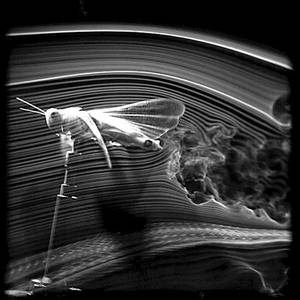

Gai honi buruzko eduki gehiago
Elhuyarrek garatutako teknologia





